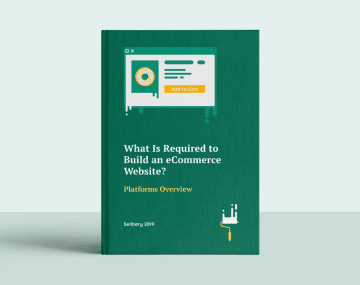
Discover how reliable testing helps e-commerce stores scale, avoid tech issues, and deliver seamless customer experiences across multiple sales channels.
Growth is a thrilling goal for every e-commerce business, but scaling isn’t just about adding more products or attracting more traffic. It’s about handling more complexity: more integrations, more platforms, more customers, and more potential points of failure.
What often gets overlooked in the excitement? Stability. A high-growth e-commerce store needs reliable systems that won’t crack under pressure. That’s where reliable testing becomes your best ally.
In this article, we’ll dig deep into the scaling challenges online sellers face, and why e-commerce testing – done right and done often – is the secret weapon that supports long-term, sustainable growth.
The Multichannel Maze: Opportunity Meets Complexity
Selling across multiple platforms – your website, Amazon, Etsy, social media marketplaces – has become the standard for growth. But with each added sales channel comes a web of unique rules, data sync demands, and system requirements.
For example, product descriptions need reformatting, pricing may need adjusting based on platform fees, and inventory levels have to be updated in real time across all channels. Managing this manually is next to impossible; even with automation, the risk of errors is ever-present.
One misstep – a pricing mismatch or an out-of-stock item listed as available – can cost you a sale or damage your brand’s credibility.
Automation Is a Growth Enabler – But It Needs Oversight
Automation tools like order routing systems, product feed managers, and CRM integrations are critical to scale. They reduce manual workload and help you keep up with increasing demand. But relying on automation without regular testing is like driving a car without checking the brakes.
What happens if an integration update breaks your order tracking? Or your fulfillment provider’s API changes? These technical glitches often go unnoticed until customers start emailing… or complaining publicly.
Testing helps you trust your automation. And it ensures that growth doesn’t come at the cost of quality.
The Cost of Poor Testing: Real Risks at Scale
Neglecting testing can quietly chip away at your growth in ways you may not immediately notice:
- Revenue loss: Broken checkout processes or slow-loading pages lead to cart abandonment.
- Customer frustration: UX inconsistencies damage the buyer journey and kill loyalty.
- Operational delays: Unspotted bugs in backend systems slow down order processing and customer support.
- Missed insights: Without monitoring and testing analytics tools, your data might be inaccurate, leading to poor decision-making.
Even minor technical flaws can lead to significant losses in a competitive space where every conversion counts.
Why E-commerce Testing Needs to Be Proactive, Not Reactive
Most online sellers only test when something breaks. That’s the equivalent of fixing a leaky roof after your inventory gets soaked.
Proactive testing involves planning and simulating scenarios before scaling, during platform changes, and launching new features or channels.
Testing should not be seen as a one-time task, but a continuous loop that improves performance and customer satisfaction.
Types of Testing Every Scaling E-commerce Store Should Embrace
Here’s a breakdown of the core testing types that support stable scaling:
1. Functional Testing
Validates that core functionalities – search, cart, checkout, filters – work as intended across all platforms and devices.
2. Performance Testing
Assesses how your site performs under different loads. Will your platform hold up during a flash sale?
3. Regression Testing
Ensures new features or updates don’t break existing functionality. This is critical when you roll out changes during peak sales seasons.
4. Security Testing
Protects sensitive customer and payment data from threats. Cyberattacks don’t just cost you money – they erode trust.
5. Integration Testing
Tests how well your platform communicates with third-party tools like payment gateways, shipping APIs, or CRMs.
Scaling Brings Global Opportunities – and Localization Challenges
As your brand grows, so does your audience. Reaching customers in new regions requires more than just translating your site. You must localize currencies, taxes, delivery options, and customer expectations.
For example:
- Are your shipping methods optimized for different countries?
- Do your tax rules comply with local laws?
- Is your language translation contextually accurate?
Without thorough testing, these critical details can get lost in translation. And a tiny misstep can result in abandoned carts or compliance issues.
From 10 Orders to 10,000: How Testing Supports Exponential Growth
Scaling is not linear. What worked when you had 10 daily orders may fall apart when you hit 1,000.
As highlighted in this eye-opening piece on scaling up challenges and e-commerce growth stories, many sellers encounter bottlenecks not because of poor marketing, but because their backend couldn’t keep up.
Here’s how testing can help as your order volume grows:
- Load testing ensures your infrastructure won’t crash under traffic spikes.
- Order simulation tests identify potential bottlenecks in fulfillment or customer communication.
- Payment flow checks ensure you can handle various transactions (PayPal, credit card, BNPL, etc.) without hiccups.
Monitoring Customer Journeys in Real Time
Beyond scripted tests, real-time monitoring tools provide actionable insights into how customers interact with your store.
By analyzing heatmaps, session recordings, and funnel drop-offs, you can:
- Identify areas where users get stuck
- Test new UX designs before full rollout
- Fix friction points that are hurting your conversion rate
This form of live testing helps you continuously evolve, not just react.
The Link Between Testing and Customer Trust
In e-commerce, trust is everything. A seamless experience builds confidence, while technical hiccups erode it fast.
Think about it: Do you think they’ll try again if a customer hits a 404 error or your payment gateway fails mid-purchase?
Reliable testing = reliable experience = reliable reputation.
And in today’s world of instant feedback and online reviews, that trust can make or break your brand.
Using Data to Refine Testing Strategies
Data should guide your testing efforts. Dive into:
- Bounce rates on key landing pages
- Cart abandonment metrics
- Conversion rates across traffic sources
- Customer service complaints related to bugs or performance
When you analyze this data regularly, you’ll start seeing trends and patterns, which will help you test smarter, not harder.
Scaling Without Testing Is a Risk You Can’t Afford
If you’re serious about scaling your e-commerce business, don’t leave testing on the back burner.
Reliable testing helps you:
- Catch bugs before customers do
- Maintain performance under pressure
- Deliver consistent experiences across platforms
- Avoid lost sales and brand damage
- Scale confidently, not cautiously
Remember: Growth is good. But scalable, stable, and smart growth is better.
A/B Testing vs. Functional Testing: What’s the Difference?
While both are important, A/B and functional testing serve different purposes.
- A/B testing focuses on marketing optimization. You’re testing different versions of a landing page, CTA button, or product image to see which performs better with real users.
- Functional testing ensures features work, such as whether users can filter products or complete checkout without hitting an error.
As your store scales, you need both. A/B testing improves conversion rates, while functional testing ensures users don’t encounter technical blocks that could kill sales entirely.
Think of A/B testing as the fine-tuning, and functional testing as ensuring the engine runs at all.
How Testing Supports Personalization at Scale
One of the most significant advantages of scaling is the ability to personalize experiences. From dynamic product recommendations to geo-targeted offers, personalization can significantly increase conversion rates and customer loyalty.
But here’s the catch: personalization requires complex data handling and conditional logic. If not tested thoroughly, it can lead to:
- Incorrect product suggestions
- Confusing or irrelevant messaging
- Poorly targeted promotions
With testing in place, you can validate that personalized elements render correctly for each customer segment. For instance, ensuring that a returning user sees a tailored homepage experience – and that it loads just as fast as the default.
Testing lets you scale personalization with confidence, not guesswork.
Testing for Accessibility: Don’t Leave Customers Behind
Accessibility is often overlooked, but it becomes increasingly important as your business grows and your audience diversifies.
Ensuring your website is usable by people with disabilities isn’t just good practice – it’s legally required in many regions and contributes to a better experience for everyone.
Testing for accessibility includes:
- Making sure screen readers can navigate your site
- Ensuring color contrast meets guidelines
- Validating keyboard-only navigation
- Testing form field labels and error messages
An inclusive site is a trustworthy one. As you scale, make accessibility testing part of your quality assurance plan.
When to Bring in the Pros: Partnering with Testing Experts
As your business scales, so does the complexity of your tech stack. At a certain point, you might need outside expertise to help you manage comprehensive testing strategies.
Partnering with a QA agency or platform can bring:
- Advanced testing frameworks and scripts
- Faster bug detection
- Cross-browser/device testing at scale
- Specialized accessibility or security audits
Even if you have an in-house dev team, working with experts can offload the heavy lifting and ensure your growth trajectory isn’t slowed by bottlenecks or technical debt.
And remember, growth doesn’t pause for bugs.
Checklist: Is Your Store Ready to Scale Safely?
Here’s a quick testing and optimization checklist before hitting the gas on your scaling strategy:
✅ Have you implemented automated tests for core user flows?
✅ Are you conducting regular performance and load testing?
✅ Are your third-party integrations tested after every update?
✅ Is your mobile UX tested across multiple screen sizes and browsers?
✅ Are all checkout variations (guest vs. logged in, discount codes, different payment types) validated?
✅ Do you have monitoring in place to catch real-time errors?
✅ Are your personalization and localization features tested?
✅ Is your site accessible for all users?
✅ Are your analytics and conversion tracking tools verified?
If unsure about the above, pause and patch before you scale.
Final Word: Test Early. Scale Boldly. Win Big.
There’s no denying it – scaling an e-commerce store is exciting. But it’s also complex, risky, and filled with technical landmines. Whether launching new channels, expanding globally, or growing your customer base, reliable testing is the only way to ensure smooth, stress-free growth.
From performance testing and third-party integration checks to accessibility validation and UX optimization, every store layer should be tested regularly – and rigorously.
With proactive, automated, and strategic testing, you’re not just protecting your store. You’re setting it up to thrive at scale – delivering a seamless, satisfying experience to every customer, every time.
Was this news helpful?







 Yes, great stuff!
Yes, great stuff! I’m not sure
I’m not sure No, doesn’t relate
No, doesn’t relate



